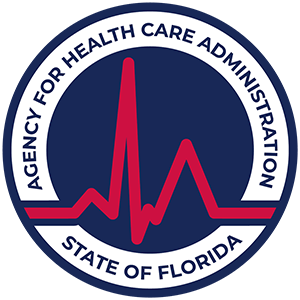Drug Use Normalization and Addiction
Explore drug use normalization and addiction, its impacts, treatment options, and overcoming stigma in recovery.

Understanding Addiction
Definition of Addiction
Addiction is a complex condition characterized by compulsive engagement in rewarding stimuli despite adverse consequences. It involves changes in brain function that affect emotions, behavior, and cognition. The National Institute on Drug Abuse notes that the chronic nature of addiction makes it difficult to treat, as individuals may experience relapse even after prolonged periods of sobriety.
Impact of Drug Abuse
Drug abuse has profound effects on individuals, families, and communities. It can lead to various health problems, social issues, and economic burdens. According to the Tennessee Department of Mental Health & Substance Abuse Services, the consequences of drug abuse can include:
To illustrate the impacts, the following table summarizes some statistics about drug abuse in the United States:
CategoryStatisticDrug Abuse PrevalenceApproximately 20.3 million people in the U.S. have had a substance use disorder in the past year. drug abuse in usa statisticsEconomic ImpactDrug abuse costs the U.S. economy over $740 billion annually in lost work productivity, healthcare expenses, and crime-related costs.Treatment NeedOnly 10% of those with a substance use disorder receive treatment.
Understanding addiction and the impact of drug abuse is crucial for addressing the normalization of drug use in society. The recognition of these issues is a vital step toward effective treatment and prevention strategies. For more information on treatment options, refer to our article on outline of treatments for drug abuse. Additionally, exploring factors influencing drug use can help identify needed support and resources for individuals struggling with addiction.
Brain and Drug Addiction
Understanding the relationship between drug use and the brain is essential in addressing addiction. The brain's architecture plays a crucial role in how drugs affect individuals, leading to reinforcement patterns that may contribute to addiction.
Reward Circuit in the Brain
Most drugs act on the brain's "reward circuit" by provoking euphoria and flooding it with dopamine. This release reinforces the behavior, making the individual want to repeat the experience [1]. Over time, the brain responds to the constant surge of dopamine by adapting, which can diminish the reward circuit's effectiveness. This adaptation leads to tolerance, meaning individuals need to take higher doses of the drug to achieve the same euphoric effects.
Drug TypeInitial EffectTolerance DevelopmentStimulantsIncreased energy, euphoriaRequires higher doses for desired effectOpioidsPain relief, euphoriaMore of the drug is needed to avoid withdrawalAlcoholRelaxation, euphoriaIncreased amounts needed for same level of intoxication
Long-term Effects on Brain Functions
Long-term drug use significantly alters various brain chemical systems and circuits, negatively affecting functions such as learning, judgment, decision-making, stress regulation, memory, and behavioral control [1]. These changes can also foster a dangerous cycle of dependency:
The interplay between societal normalization of drug use and individual brain adaptations illustrates a complex challenge in combating addiction. Changes in laws regarding drug use can also blur the lines between responsible consumption and addiction, contributing to increased experimentation and, ultimately, misuse. For more information on the various factors influencing drug use, consider visiting our resource on factors influencing drug use.
Treatment and Recovery
Addiction is a chronic disease often characterized by compulsive drug-seeking behavior and continued use despite harmful consequences. Understanding the chronicity of addiction is essential in determining effective treatment and recovery strategies.
Chronicity of Addiction
Addiction is widely recognized as a "relapsing" disease. Individuals in recovery may experience a heightened risk of returning to drug use even after prolonged abstinence. This tendency is attributed to changes in the brain caused by prolonged drug abuse, which affects areas responsible for decision-making, judgment, and behavior control. The implications of these changes underscore that addiction treatment is not a definitive cure but rather a manageable condition that often requires ongoing support.
After a period of abstinence, the brain's reward system takes time to recover, making individuals susceptible to relapse if they encounter stress or triggers associated with substance use. It is crucial to integrate strategies for managing stress as part of a recovery plan. Effective approaches include maintaining a well-balanced life and practicing stress management skills.
Best Treatment Approaches
Combining medications with behavioral therapy is generally recognized as the most effective strategy for treating addiction. This integrated approach offers the best chance of success for most patients. The following table outlines some of the commonly used methods in addiction treatment:
Treatment ApproachDescriptionBehavioral TherapyTherapy helps individuals develop coping skills, address triggers, and modify behaviors related to drug use.MedicationsMedications assist in reducing cravings and withdrawal symptoms. Common medications include methadone for opioid use and naltrexone for alcohol dependence.Support GroupsPeer support programs, such as Alcoholics Anonymous and Narcotics Anonymous, provide a community and shared experiences to aid recovery.Relapse Prevention TrainingEducation on identifying triggers and developing coping strategies is critical in preventing relapse.
Relapse prevention strategies are vital in addiction recovery. Key strategies include therapy and skill development, the use of medications, and consistent monitoring. It is important to recognize the stages of relapse—emotional, mental, and physical—so interventions can be timely and effective [3].
Long-term recovery from addiction involves ongoing maintenance, support, and continuous engagement with treatment services. While each individual's journey may differ, understanding the chronic nature of addiction helps inform the most effective recovery strategies. For more information on treatment options, visit our article on the outline of treatments for drug abuse.
Prevention of Drug Use
Addressing drug use and its corresponding addiction requires effective prevention measures. Understanding the role of prevention programs and the influences that contribute to the normalization of drug use is essential in curbing these issues.
Role of Prevention Programs
Prevention programs can significantly affect reducing drug use and addiction. These initiatives often involve families, schools, communities, and media to effectively communicate the risks associated with substance abuse. Education and outreach are fundamental components that help inform individuals about the dangers linked to drug use. Research indicates that such programs can lead to a decrease in drug-related issues among various populations [1].
Key elements of effective prevention programs include:
Program ComponentDescriptionEducationProviding information about the consequences of drug use.Community InvolvementEngaging families and communities for support and outreach.School ProgramsImplementing curricula that address drug risks and healthy choices.Media CampaignsUtilizing media to raise awareness and counteract glamorization of drug use.
Influences on Drug Normalization
The normalization of drug use is shaped by various factors, significantly impacting individual choices regarding substance use. Social acceptance and peer pressure are major influences. People often feel compelled to conform to their social circles, which can lead to drug use becoming normalized in certain groups.
Social media has emerged as a substantial platform for shaping attitudes. Influencer culture can glamorize drug use, impacting follower perceptions and behaviors [4]. Additionally, the portrayal of drug use in movies and TV shows, particularly when depicted without emphasizing the associated risks, can further contribute to this normalization [4].
Cultural and historical perspectives also play a role; certain subcultures may embrace drug use as part of their community identity, leading to its normalization within specific groups. The influence of these factors underlines the importance of targeted prevention approaches that consider the social dynamics involved and strive to educate about the realities of drug use.
Understanding these influences allows for more tailored prevention strategies, fostering healthier communities and reducing the prevalence of drug use. For further exploration of factors influencing drug use, refer to our article on factors influencing drug use.
Risk Factors for Drug Use
Understanding the various risk factors for drug use is essential for preventing addiction. These factors can significantly influence an individual's likelihood of engaging in substance abuse. Two notable risk factors include peer pressure and social acceptance, as well as the link between mental health and substance use.
Peer Pressure and Social Acceptance
Peer pressure plays a crucial role in the normalization of drug use, significantly influencing individuals' decisions to experiment with drugs. As individuals seek acceptance within their social circles, they may feel compelled to engage in substance use to fit in. This pressure is often intensified by the influence of social media, where drug use can be glamorized by trends and online personalities. According to Conifer Park, influencer culture can shape attitudes towards drug use, making it seem more acceptable or desirable.
Age GroupPercentage Reporting Peer Pressure to Use DrugsAdolescents (13-18 years)60%Young Adults (19-24 years)45%Adults (25+ years)25%
These numbers illustrate how social pressures vary across age groups, with younger individuals more susceptible to peer influence. Understanding these dynamics is vital in addressing drug use normalization and addiction.
Mental Health and Substance Abuse Link
There is a significant correlation between mental health issues and substance abuse. Individuals with untreated mental health conditions often resort to drugs as a form of self-medication. This behavior can result in a cycle of addiction, where drug use exacerbates mental health symptoms, leading to further substance dependence.
The following factors highlight the connection between mental health and drug use:
Mental Health ConditionIncreased Likelihood of Substance AbuseDepression10-15 times higherGeneralized Anxiety Disorder3-5 times higherPost-Traumatic Stress Disorder3-5 times higher
Understanding how these factors interconnect is pivotal in addressing the issue of drug use normalization and addiction. Proactive measures, including education and targeted interventions, can help mitigate these risks. For more about the causes and influences on drug use, explore our article on factors influencing drug use.
Stigma and Drug Use
Stigmatization of individuals with substance use disorders can have profound effects on their treatment and recovery efforts. This section will explore the impact of stigma on treatment and methods to overcome structural stigma within society.
Impact of Stigma on Treatment
Stigma surrounding drug use often leads to negative perceptions of individuals seeking help. Referring to someone as a "substance abuser" instead of recognizing them as a person with a "substance use disorder" can influence the judgments others make about them. This language can foster a view of substance use as willful misconduct, potentially discouraging individuals from pursuing necessary treatment [5].
High stigma can deter individuals from accessing treatment services, fearing societal judgments. Concerns about being labeled can result in a reluctance to disclose drug use and seek help, leading to poor treatment outcomes. In fact, relapse rates remain high, with approximately 50% within 12 weeks after completing intensive inpatient programs, which underscores the challenges these individuals face [3].
Stigma EffectDescriptionReluctance to Seek HelpIndividuals may avoid treatment to escape judgment.Negative Self-PerceptionStigmatization can lead to feelings of shame and hopelessness.Increased IsolationFear of judgment can lead to withdrawal from supportive environments.
Overcoming Structural Stigma
Addressing stigma at a structural level involves transforming societal perceptions and practices regarding drug use and addiction. Efforts can include public awareness campaigns that focus on educating the community about addiction as a disease rather than a moral failing. By normalizing conversations about addiction and beauty in recovery, the hope is to foster a more supportive environment for individuals seeking help.
Developing inclusive policies that protect those with substance use disorders from discrimination in healthcare, employment, and other areas is essential. Creating supportive networks, such as peer recovery groups, can help normalize experiences with addiction and create spaces for shared understanding and recovery.
The normalization of drug discussions can assist in reducing stigma. As society increasingly acknowledges addiction as a public health matter rather than a criminal one, comprehensive approaches to treatment can become more accepted. Such changes can ultimately lead to improved accessibility to resources and enhanced treatment outcomes for those struggling with addiction. For more on this topic, consider exploring the link between factors influencing drug use and the normalization of drug use in society as discussed in various studies.
References
[2]:
[3]:
[4]:
[5]:














.svg)








